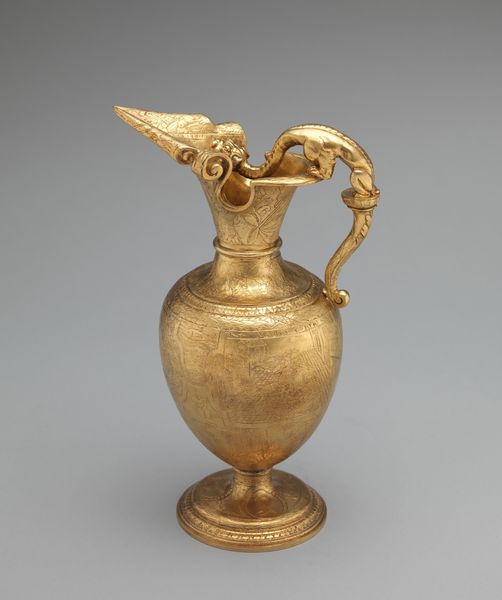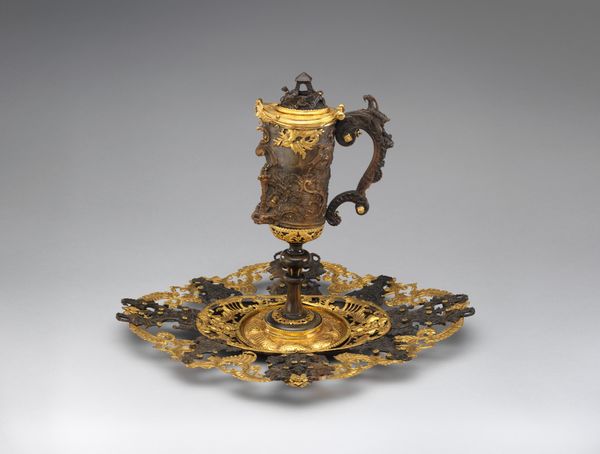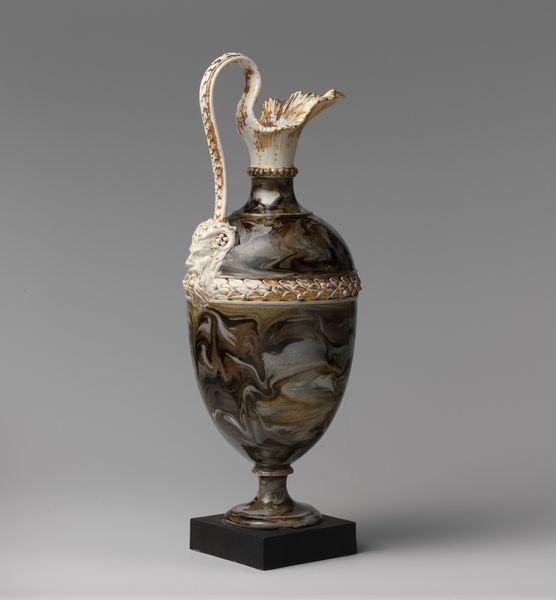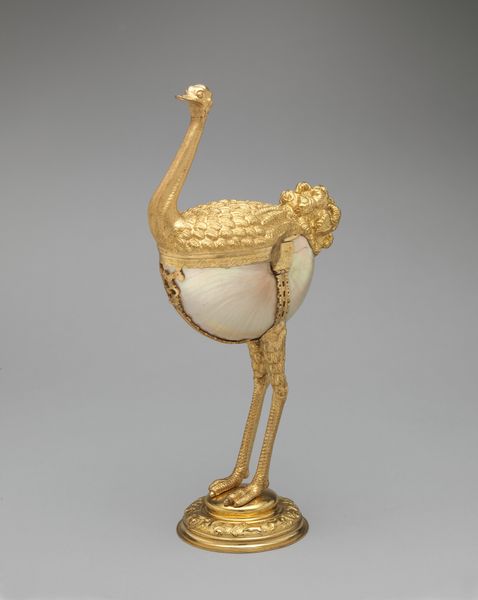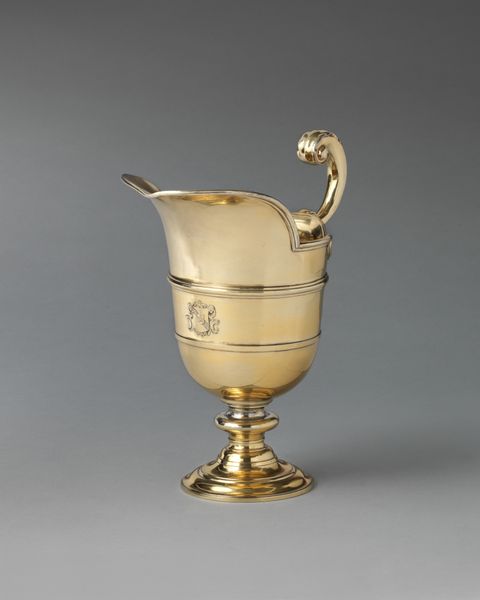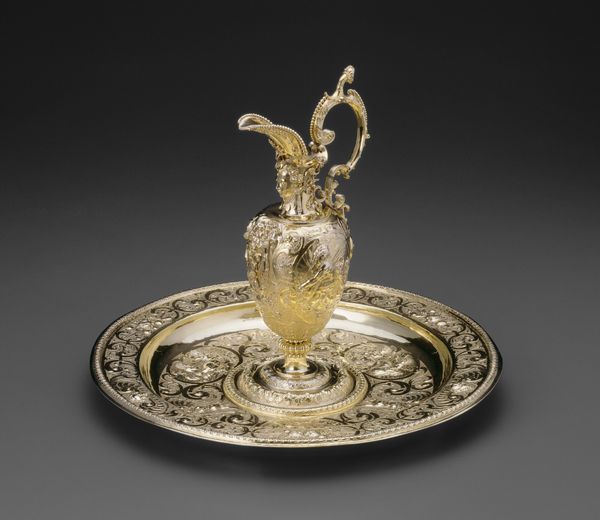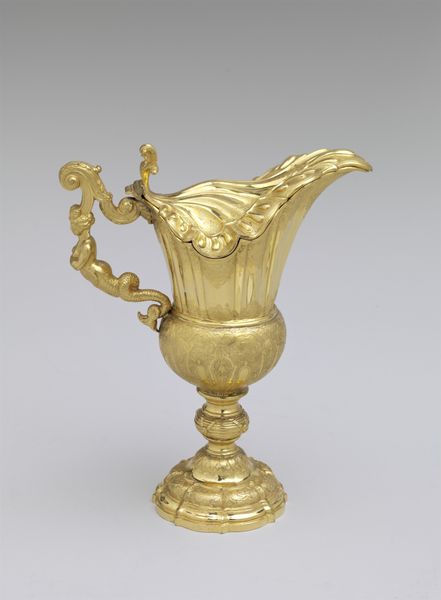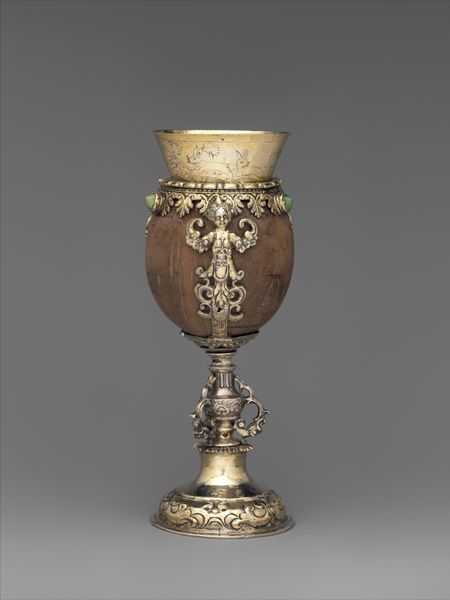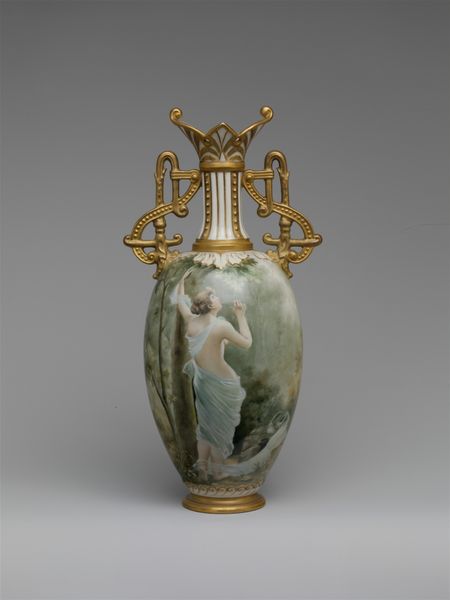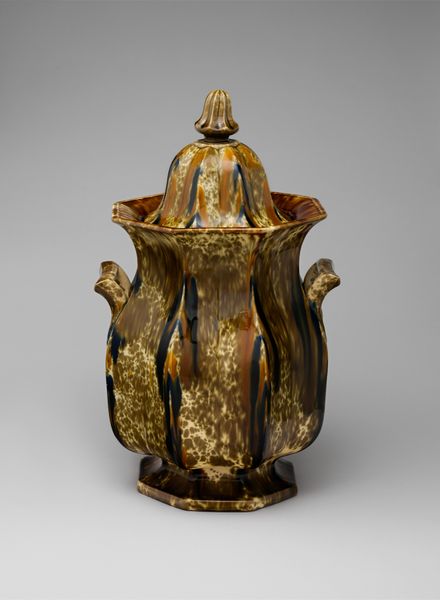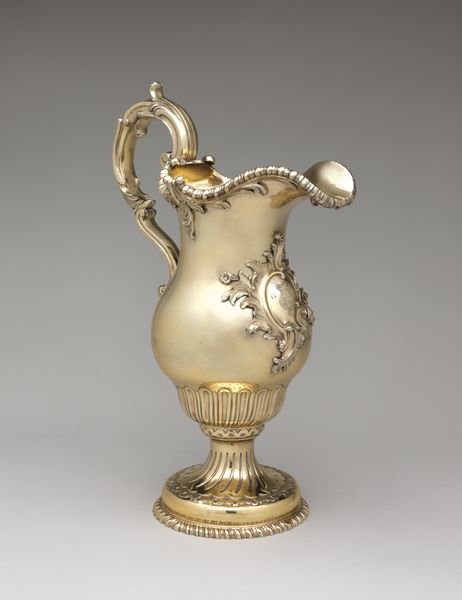
Dimensions: Overall: 10 1/4 × 10 3/8 × 4 1/4 in. (26 × 26.4 × 10.8 cm)
Copyright: Public Domain
Curator: Right now we're looking at a Standing Cup, dating roughly between 1865 and 1895, created by Reinhold Vasters. It's part of the collection at the Metropolitan Museum of Art. Editor: My initial impression is pure opulence. It feels incredibly ornate, almost aggressively decorative. What strikes you first about it? Curator: It’s the combination of the earthy chalcedony stone with the precious metals and enamels for me. Vasters clearly aimed to evoke the luxury of the Renaissance period. There is a calculated pastiche of cultural symbols throughout, like the mermaid figures and the fantastical griffin perched at the stern. Editor: I agree, it screams conspicuous consumption. Look at the painstaking detail on the goldwork – the chasing, the granulation, setting all those jewels. It's a real testament to the skill and time involved, a showcase of artistic labor even if it's riffing off earlier designs. Curator: Absolutely. The standing cup, as a form, was closely tied to ritual and display. It wasn’t just about drinking; it was about power, prestige, and visual storytelling, think royal ceremonies, weddings, things of that nature. Every motif carries echoes of ancient myths and heraldic meanings. Editor: Though I can't help wondering about Vasters’ place in all this. We see echoes of Baroque splendor but made during the Industrial Revolution. Was he critiquing the Victorian obsession with grandeur, or just capitalizing on a revivalist trend and demonstrating high class wealth during the Gilded Age? Curator: I see the point, there is tension present. Was it crafted as a deliberate exercise in resurrecting historical forms, imbuing those forms with meaning through their continued creation, even during radical social change? The very materiality seems to point towards wealth, but also to this deep obsession with memory. Editor: Food for thought indeed. For me, it boils down to materiality and technique. Vasters blended traditional metalworking skills with, essentially, a production line fueled by consumerism. Perhaps the lasting message lies in how these opposing forces converge in a single, lavish object. Curator: An excellent summary. I appreciate how you connected that historical context to our contemporary moment.
Comments
No comments
Be the first to comment and join the conversation on the ultimate creative platform.
